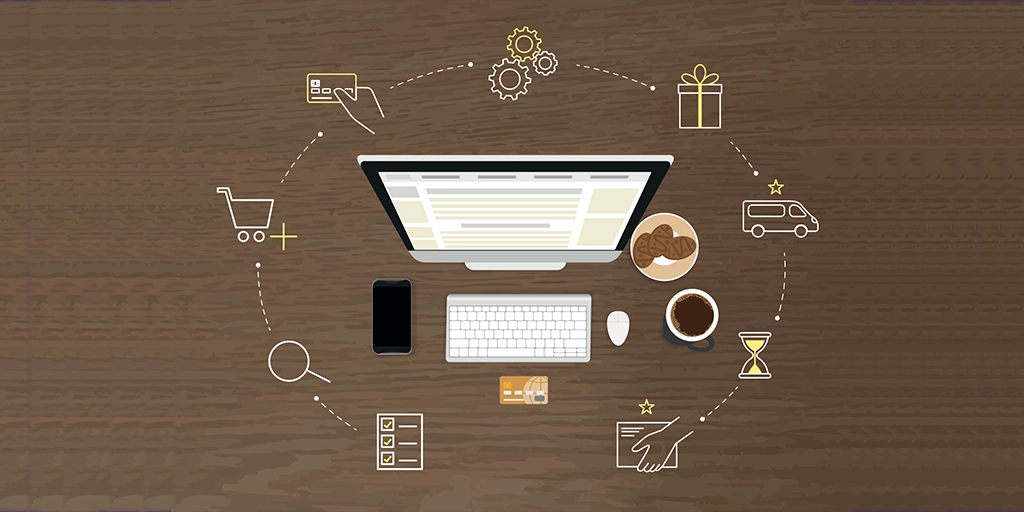6 Crucial Factors to Consider When Evaluating Headless Commerce
In today's rapidly transforming digital marketplace, staying abreast of technological advancements isn't a luxury—it's a critical element of competitive edge. Headless commerce, a powerful innovation separating the front-end customer experience from the back-end infrastructure, has emerged as a key player in the future of digital commerce.
But is headless commerce the right choice for every organization? Much like a bespoke suit, the best technology solutions are those tailored to fit unique business requirements. Therefore, evaluating headless commerce demands a thorough understanding of its capabilities, matched against your enterprise's specific needs and goals.
In this guide, we'll delve into the crucial factors to consider when evaluating headless commerce. We'll explore technical considerations, resource evaluation, the impact on customer experience, cost-benefit analysis, and how headless commerce can future-proof your business. Armed with this knowledge, you'll be well-positioned to decide whether headless commerce fits your enterprise.
Let's begin our deep dive into the world of headless commerce.
1. Understanding Your Enterprise's Specific Needs
Headless commerce is not a one-size-fits-all solution. To truly leverage its potential, you must comprehend how well it aligns with your enterprise's needs. Evaluating your unique requirements is the first step towards understanding if headless commerce is right for your organization.
Firstly, consider your business model. Is your enterprise primarily B2B, B2C, or a mix? Headless commerce can serve all these models, but its implementation might vary. For instance, a B2B model might benefit from a headless architecture to handle complex workflows and integrations with ERP systems. In contrast, a B2C model might leverage it to create engaging, personalized experiences across multiple touchpoints.
Next, examine your current eCommerce platform. Does it limit your ability to innovate and adapt to market trends? If you're struggling with restrictive templates, slow performance, and lack of flexibility, transitioning to a headless commerce model could be your enterprise's breakthrough.
Consider the scale of your operations. Enterprises with a broad range of products and services, diverse customer segments, or a presence across different regions could benefit immensely from headless commerce's flexibility and scalability.
Lastly, factor in your strategic growth plans. If you're anticipating significant expansion in the near future—be it launching new products, exploring new markets, or offering more personalized experiences—a headless commerce platform can provide the scalability and agility you need to grow while upgrading performance and customer experience.
Understanding your enterprise's specific needs is the first step in evaluating the fit of headless commerce. Only with a clear picture of your business's requirements, strengths, and growth plans can you accurately assess if a transition to headless commerce is the strategic move forward.
2. Technical Considerations
As you evaluate the viability of headless commerce for your enterprise, an essential aspect to scrutinize is the technical landscape. Switching to a headless architecture isn't merely an operational change; it's a strategic shift that can reshape the entire technical fabric of your eCommerce operations. Here are vital technical considerations to bear in mind:
To begin with, examine your current tech stack. A headless commerce implementation interacts with several other components of your technology suite, such as your CMS, PIM, OMS, and other data sources. Understanding these systems' compatibility and integration potential with a headless commerce solution is crucial.
Secondly, gauge the readiness of your team. Headless commerce involves working with modern technologies such as JavaScript frameworks (React, Vue.js) and GraphQL. Assess if your team possesses the required skills or if there's a need for training or hiring.
The third factor to consider is the required development effort. Headless commerce provides a high degree of customization but also demands a strong communication culture and collaboration between business leaders and engineering. Since headless builds often leverage the latest JavaScript libraries like React.js and Vue.js, your in-house team may need to brush up on these specific technologies before diving in. Often, new headless builds require the enterprise to bring in a consulting team to help the engineering team with the initial work; this is a budget consideration we will consider later in the guide.
Last, consider the timeline. While a rip-and-replace strategy may be ideal on paper, it could lead to technical execution risks. Taking advantage of headless commerce solutions that let you migrate over time while offering initial benefits by supplementing your current may be a promising strategy.
From your tech stack's compatibility to the expertise of your team, security requirements, and the required development effort, each technical aspect carries weight. Carefully analyzing these factors will provide a realistic understanding of the technical implications and feasibility of transitioning to headless commerce for your enterprise.
3. Resource Evaluation
Adopting a new technology or platform like headless commerce is an investment—not only in terms of financial costs but also in terms of the time, skills, and staffing your enterprise will dedicate to it. Therefore, conducting a thorough resource evaluation is critical to the decision-making process.
Start by evaluating your in-house team's capabilities. As mentioned in the previous section, headless commerce often utilizes modern technologies, especially on the front end. Does your team have the required knowledge and skills? Check for expertise in GraphQL APIs and React JavaScript or Vue JavaScript experience. Don't change course if these skills are missing, as they are easy for sound engineers to pick up; instead, consider a slightly extended timeline to ensure your team feels comfortable with this new technology.
Working with a consulting firm specializing in headless commerce is an often-used strategy to parallel work. This ensures that your current team can continue their work on your live web store while the new headless store is built at the same time. A strategy like this also gives your in-house team the time they need to learn any new required skills.
These considerations can have a significant impact on both costs and implementation timelines.
Next, assess your capacity to handle ongoing maintenance and updates. Unlike traditional platforms, a headless commerce solution may require more hands-on management, including maintaining the front-end and back-end separately and ensuring they integrate seamlessly. You must have the human resources and technical expertise to manage these tasks efficiently.
Then consider your financial resources. While headless commerce can deliver substantial benefits in the long run, it requires an upfront investment. This includes not only the cost of the platform itself but also potential costs related to training, hiring, development, and maintenance. Conduct a thorough cost-benefit analysis to determine whether this investment aligns with your enterprise's financial health and long-term business objectives and determine what your quick ROI wins may be.
Finally, assess the time resources required. Implementing a headless commerce solution is not an overnight task. It involves careful planning, development, testing, and migration. It would be best if you were prepared for this investment in time and ensured it wouldn't disrupt your regular business operations.
In essence, understanding the scope of resources—human, financial, and temporal—needed for a transition to headless commerce is paramount. By aligning these resources with your overall business strategy, you can determine if your enterprise is ready to leap into the headless commerce world.
4. Customer Experience Impact
The core of any business decision, particularly technology adoption, should be its potential impact on the customer experience. In today's digital age, delivering a superior, seamless, and personalized customer experience is no longer just a competitive advantage—it's necessary. Here's how a transition to headless commerce could impact your enterprise's customer experience:
Firstly, consider headless commerce's flexibility in terms of customer touchpoints. With the separation of front-end and back-end, businesses can consistently and efficiently push content and shopping experiences across multiple channels—web, mobile, social media, IoT devices, and more. This omnichannel presence can enhance the customer's shopping experience, providing seamless interactions across various platforms.
Next, think about the potential for personalization. Headless commerce can allow your enterprise to deliver more personalized experiences to your customers thanks to its ability to integrate with various data sources and applications. Unlike traditional technology, headless commerce can also provide this personalization at high speeds. By leveraging headless data flows you can better understand your customer's behaviors and preferences, allowing you to tailor their shopping experiences accordingly.
Another critical factor is performance. As discussed in previous posts, headless commerce can significantly improve your website's speed and responsiveness, directly influencing customer satisfaction. Studies have consistently shown a direct correlation between page load speeds and conversion rates: the quicker your pages load, the more likely customers are to complete their purchases. This affects KPIs like conversion rates and average order value and is crucial to your ROI calculation.
Lastly, consider the impact on future innovation. Adopting a headless commerce architecture can set your enterprise up for continued evolution in line with consumer trends and technological advances. This future-proofing aspect means that as customer expectations evolve, your business will be better positioned to meet and exceed them.
While the initial transition to headless commerce may be a substantial undertaking, the potential enhancements to customer experience can offer significant returns. These factors can help you decide whether headless commerce aligns with your customer experience goals.
5. Cost-Benefit Analysis
Evaluating the financial implications of transitioning to headless commerce is crucial to your decision-making process. This involves a comprehensive cost-benefit analysis beyond just comparing the costs of different solutions.
On the cost side, you need to account for several elements. The first is the upfront investment, including licensing or subscription fees for the headless commerce platform. But there are also costs related to potential system integrations, web development, and implementation. As discussed in the resource evaluation, costs might be associated with staff training or hiring new talent with the necessary technical expertise. Don't forget to factor in ongoing costs like maintenance, updates, and potential service fees.
On the benefit side, consider the potential returns that headless commerce could bring to your enterprise. These can come in many forms. For instance, improved website performance can enhance customer experience, higher conversion rates, and increase average order value. The scalability of headless commerce can support your business growth without requiring significant additional investment. The ability to innovate faster and deliver more personalized customer experiences can help you stay competitive in a rapidly evolving digital landscape.
Quantifying these benefits can be challenging, as some are indirect or long-term. For instance, how do you measure the value of future-proofing your technology stack or providing a superior customer experience? While you may be unable to pinpoint a precise dollar value on these benefits, acknowledging their potential importance is essential to the analysis.
Considering costs and benefits over a realistic time horizon that aligns with your enterprise's strategic planning is paramount. This will allow you to calculate the return on investment (ROI) and decide whether the potential benefits of headless commerce outweigh the costs.
A thorough cost-benefit analysis can provide valuable insights into the financial feasibility of adopting headless commerce for your enterprise and the potential returns it could bring.
6. Future-Proofing Your Business
Ensuring your enterprise is equipped to adapt and innovate in an era marked by rapid technological advancements and changing consumer behaviors is paramount. This is where the concept of 'future-proofing' enters the picture, and it's one of the critical considerations when evaluating a move to headless commerce.
Think of traditional commerce platforms as a bundle of twigs bound tightly together. If one twig (a component of your system) needs to be replaced or updated, the entire bundle has to be untied, which is time-consuming and potentially disruptive to the whole structure. On the other hand, headless commerce is like a bundle of twigs held together by a flexible band. You can easily remove, add, or adjust individual twigs without disturbing the rest, symbolizing the separate components of your commerce system.
The decoupling inherent in headless commerce gives your enterprise the flexibility to adapt more swiftly to market changes. As new technologies or trends emerge, you can plug them into your existing system without causing a major upheaval or needing to untie the whole bundle.
The role of APIs in a headless commerce system is vital for its future-proof nature. APIs enable different software solutions to communicate, acting as connectors between your 'twigs.' This means you can seamlessly integrate new applications or services into your system, making it easy to switch out or add components as necessary.
Moreover, with the front-end layer operating independently, you can regularly update and refresh your customer-facing interfaces to stay in line with design trends and customer preferences, all without worrying about affecting your back-end operations.
Investing in headless commerce can also help future-proof your enterprise against the growing trend of omnichannel retail. With consumers interacting with brands across multiple channels, a headless system can help you deliver a consistent, high-quality customer experience across all touchpoints.
To sum it up, headless commerce provides a flexible and adaptable framework that allows your enterprise to stay at the cutting edge of digital trends and innovations, essentially future-proofing your business.
Making the Final Decision
Ultimately, the decision to move towards a headless commerce system is a strategic one that should be rooted in your enterprise's specific needs and long-term objectives. It's a significant shift, not just technologically but also in business operations and organizational culture.
Headless commerce could offer substantial benefits if your business places a high value on agility, innovation, and customer-centricity and is willing to invest the necessary resources. You may enjoy more control over your brand presentation, the flexibility to experiment and innovate, a superior customer experience, and an adaptable system that can evolve with the digital landscape.
However, it's essential to know that the transition to headless commerce comes with challenges. It may require a more significant initial investment, a change in your team's skillset, or an overhaul of your existing systems.
As with any strategic decision, due diligence is vital. Weigh the pros and cons carefully, consider the impact on all stakeholders, and evaluate how well the change aligns with your strategic objectives. Remember, what works well for one enterprise may not be the perfect fit for another.
The shift to headless commerce represents a broader trend in the digital world: a move towards greater flexibility, adaptability, and a focus on the customer experience. As your enterprise navigates its digital transformation journey, consider if headless commerce could be the key to staying competitive and future-proof in an increasingly dynamic marketplace.
We hope this exploration of the critical factors to consider when evaluating headless commerce has been informative. If you found it valuable, consider subscribing to our newsletter for more insights into the evolving world of ecommerce.
Share this
You May Also Like
These Related Stories

Headless Commerce 101: An Introduction to the Future of eCommerce

4 Benefits of Headless Commerce


